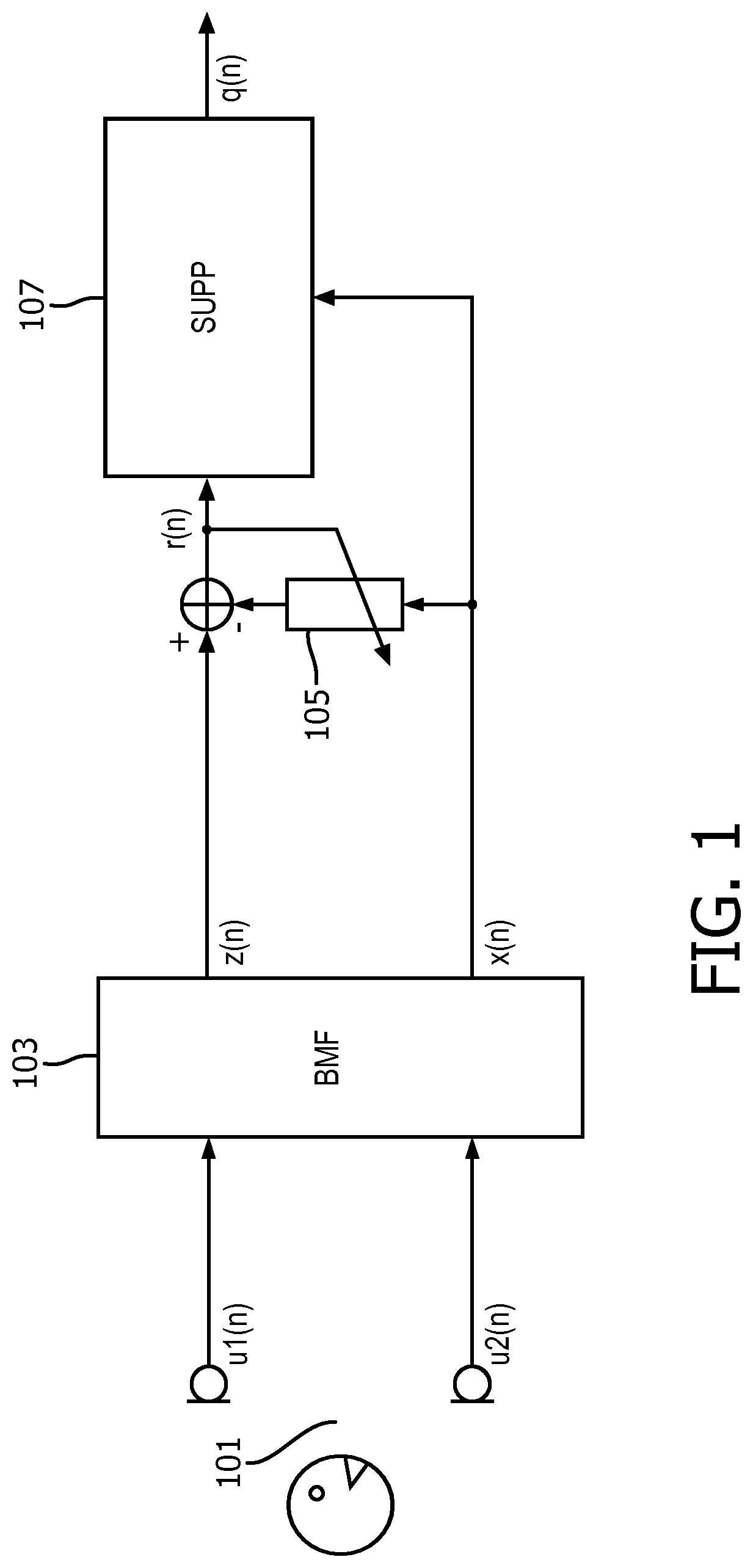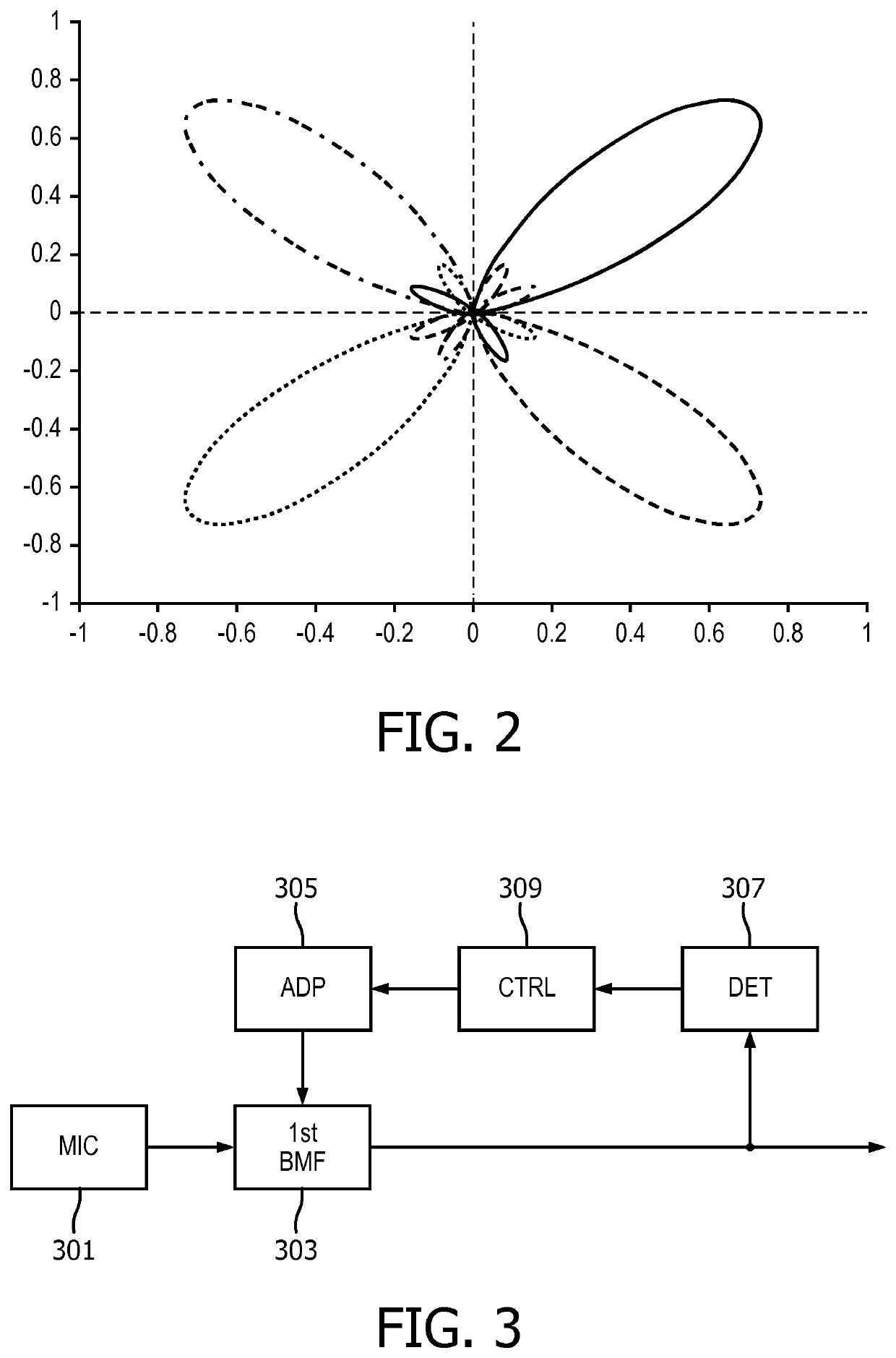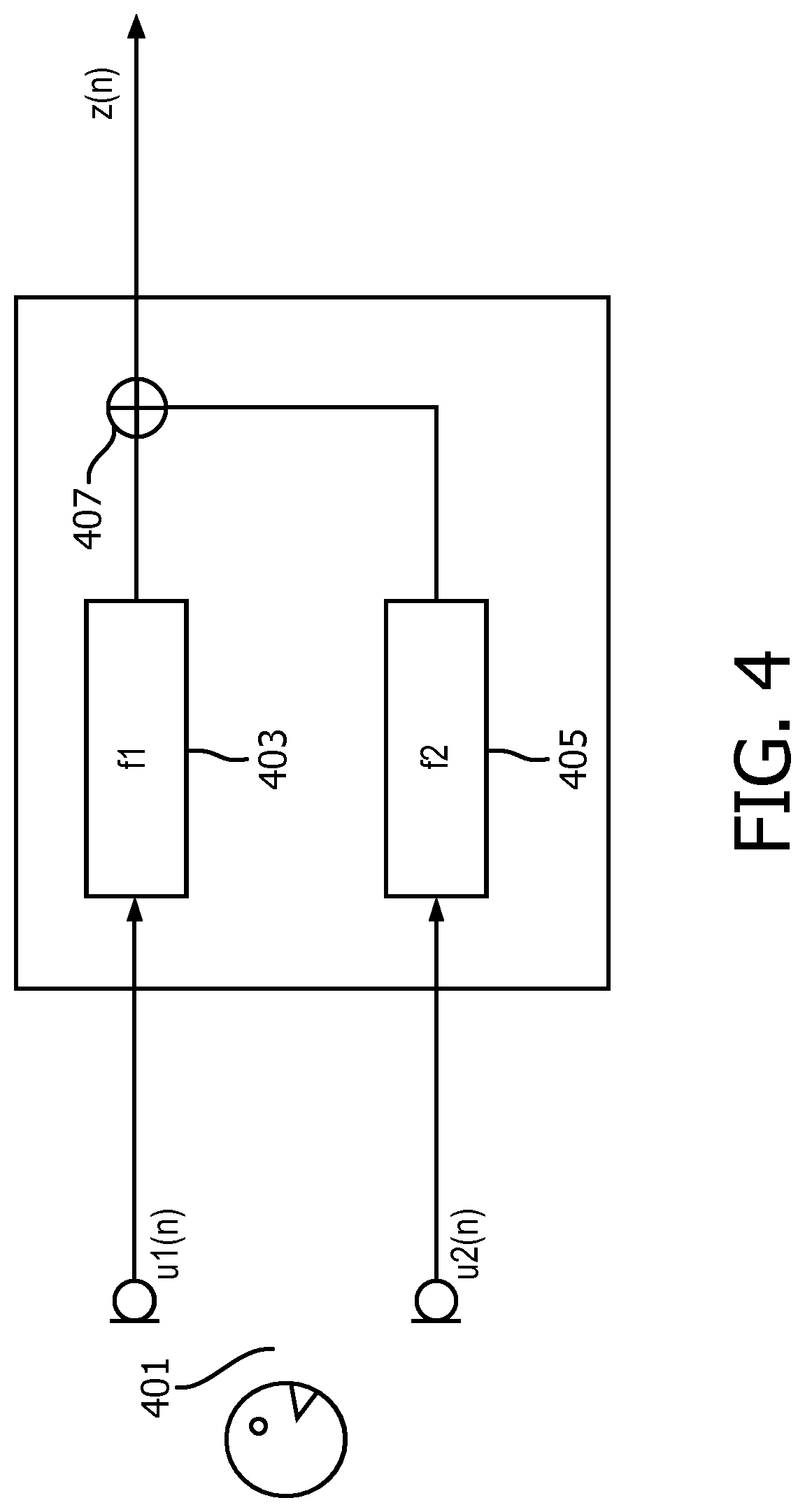Audio capture using beamforming
a beamforming and audio technology, applied in the field of audio capture using beamforming, can solve the problems of reducing so as to improve the accuracy of speech attack estimates, improve the adaptation performance, and improve the effect of speech analysis
- Summary
- Abstract
- Description
- Claims
- Application Information
AI Technical Summary
Benefits of technology
Problems solved by technology
Method used
Image
Examples
Embodiment Construction
[0101]The following description focuses on embodiments of the invention applicable to a speech capturing audio system based on beamforming but it will be appreciated that the approach is applicable to many other systems and scenarios for audio capturing.
[0102]FIG. 3 illustrates an example of some elements of an audio capturing apparatus in accordance with some embodiments of the invention.
[0103]The audio capturing apparatus comprises a microphone array 301 which comprises a plurality of microphones arranged to capture audio in the environment.
[0104]The microphone array 301 is coupled to a beamformer 303 (typically either directly or via an echo canceller, amplifiers, digital to analog converters etc. as will be well known to the person skilled in the art).
[0105]The beamformer 303 is arranged to combine the signals from the microphone array 301 such that an effective directional audio sensitivity of the microphone array 301 is generated. The beamformer 303 thus generates an output si...
PUM
 Login to View More
Login to View More Abstract
Description
Claims
Application Information
 Login to View More
Login to View More - R&D
- Intellectual Property
- Life Sciences
- Materials
- Tech Scout
- Unparalleled Data Quality
- Higher Quality Content
- 60% Fewer Hallucinations
Browse by: Latest US Patents, China's latest patents, Technical Efficacy Thesaurus, Application Domain, Technology Topic, Popular Technical Reports.
© 2025 PatSnap. All rights reserved.Legal|Privacy policy|Modern Slavery Act Transparency Statement|Sitemap|About US| Contact US: help@patsnap.com



